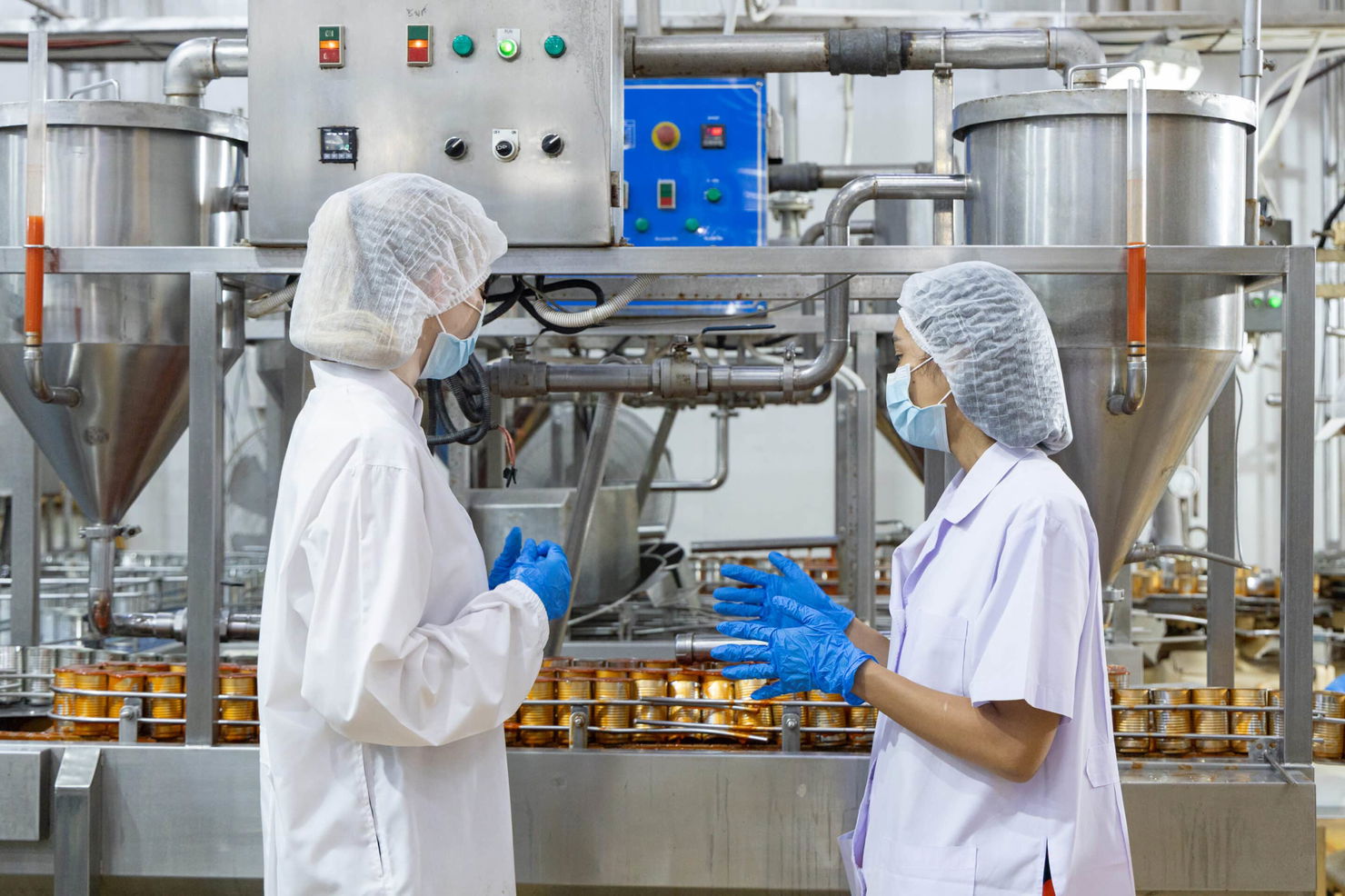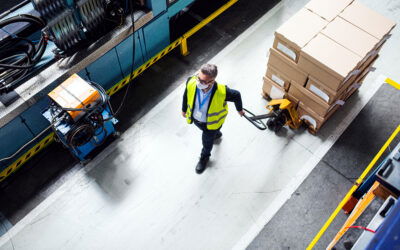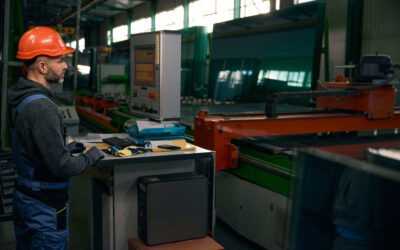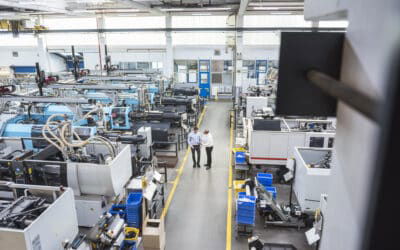OEE (Overall Equipment Effectiveness) has become a key indicator for measuring the performance of production equipment. CalculatingOEE in the food industry The sector’s strict sanitary constraints, high production rates and tight margins make it unique. Faced with these challenges, industrial managers are looking for concrete solutions to optimize productivity without stopping production.
This article is based on the case of Nutriset, which achieved a return on investment of less than 1 month by digitizing its production lines using an automated industrial monitoring technique.
OEE in the Food Industry: Availability, Performance and Quality
Defining and Calculating Overall Efficiency
OEE is a management system that combines three dimensions of equipment performance: OEE = Availability × Performance × Quality.
Availability: Measures actual versus planned uptime of production machine.
Performance: Compares actual output with the number of products theoretically possible.
Quality: Evaluates the rate of compliant products, guaranteeing product quality.
Practical example of calculation: A packaging line programmed for 8 hours with 30 minutes downtime (93.75% availability), producing 9000 units instead of 10000 (90% performance), of which 8800 conform (97.8% quality) obtains an OEE of 82.3%.
Specific features of the food production system
The food industry presents unique constraints on production performance management:
Sanitary constraints: compulsory cleaning between batches, HACCP traceability, compliance with strict quality standards.
Short shelf life: Just-in-time production, loss of perishable products at every unscheduled stop.
Frequent changes: Variety of references requiring regular adjustments to production parameters.
High speeds: Micro-stops of 3-4 seconds on high-speed lines account for 5-10% of OEE losses.
An OEE of 75-80% is considered excellent in this sector. Most plants operate between 60-70%, offering considerable potential for process optimization.
Paper Sticking: A Major Hindrance to Performance Management
A Costly Manual Process
Paper batonnage is the manual notation by operators of stoppages, quantities and incidents. This process poses four problems in all areas of production management:
Imprecision: Approximate durations, poorly identified causes, making cause analysis impossible.
Time wasted: 2-4 hours a day spent on reporting instead of optimization.
Delayed decision-making: Data available too late for effective decision-making.
Invisibility of microstops: 3-4-second “irritants” repeated 50-100 times go unnoticed.
Lack of analytical resources
Even when collected, manual data is difficult to exploit: time-consuming Excel entry, difficulty in cross-referencing information, no real-time visualization, late reporting. The management system becomes inefficient.
Nutriset Case Study: ROI in less than 1 month
Nutriset: Expert in the fight against malnutrition
Nutriset has been developing therapeutic foods for vulnerable populations for 30 years. The group has 10 partners in 10 countries, with three missions: research, production and distribution. At the Malaunay site, Nutriset manufactures food for severely malnourished children.
Four Digitization Challenges
Challenge 1: Do away with paper batonnage and overcome the lack of resources for data processing.
Challenge 2: Acquire a solution that can be installed quickly without stopping production.
Challenge 3: Obtain visual references via large-screen data distribution.
Challenge 4: Improve team well-being at work.
Solution implemented: Industrial Monitoring
In 2016, Nutriset adopted PerfTrak and MoniTrak to digitalize the manufacturing process:
22 PerfTrak systems: automatic data acquisition, machine status identification, detection of causes of stoppage, continuous OEE calculation.
7 MoniTrak screens: real-time supervision in the workshop, visualization in the control room, indicator display, alarm generation.
Non-intrusive installation: compatible with food processing environments, quick installation, no downtime required.
Results: Exceptional efficiency and ROI
Elimination of paper batonnage: Operators and managers have access to real-time information, freeing up 2-4 hours a day for process optimization.
Identifying “irritants”: The system revealed invisible micro-stops.
“The return on investment at Nutriset has been very rapid, as we have been able to eliminate as many of what we call “irritants” in our company, i.e. the little 3-4 second stoppages that occur fifty or a hundred times a shift.”
Sylvain Clausse, Maintenance and Automation Department, Nutriset
These micro-stops accounted for up to 10% of OEE losses. Using automated root cause analysis, the teams identified the root problems and stabilized the production system.
Improved well-being: Teams have integrated these solutions, which improve their working conditions, involve them in continuous improvement and provide them with reliable information.
Overall performance: considerable improvements in productivity, stabilization of costs, increased capacity to respond to humanitarian needs. The combination of automation and human involvement has transformed the way production is managed.
ROI of less than 1 month thanks to the elimination of manual reporting, the reduction of microstops, the optimization of series changeovers, and better overall resource utilization.
Today, the site has 22 PerfTraks and 7 MoniTraks, enabling optimum management of equipment efficiency in the manufacturing process.
Solutions TEEPTRAK : Agri-Food Performance Management
PerfTrak: Automated Management System
PerfTrak automatically acquires data from the production line:
- Quick installation without opening cabinets
- Universal compatibility (packaging lines, dosers, shrink-wrappers)
- Detection of states and causes of stoppage
- Real-time calculation of availability, performance and quality
- Integrated traceability for product quality
MoniTrak: Visualization and Control
MoniTrak offers real-time supervision:
- Workshop screens to get teams involved
- Control room with overview
- Visual alarms on drifts
- Automatic reporting and cause analysis
- Support for manufacturing execution systems (MES)
Multi-Domain Applications
Solutions adapted to all areas of the food industry: packaging (bottles, jars, sachets), processing (cooking, mixing, cutting), preparation (ready meals, assembly), with optimization of production parameters on each production machine.
Deploying a Food Monitoring System
Defining specifications
Clarify your objectives: current and target OEE, priority issues (micro-stops, reporting), environmental constraints, traceability requirements, budget and ROI.
Choosing the right solution
Select a system offering: food compatibility (IP65+, food standards), non-stop installation, automatic acquisition, real-time visualization, data protection, proven ROI.
Start with a Pilot
Test on a representative line, install PerfTrak and MoniTrak, measure gains over 1-2 months, validate ROI, gradually extend to the entire production line.
Training Teams
Train operators and technicians, explain the benefits (end of stick-spraying), involve them in analyzing the causes, reward their contributions, create a dynamic around efficiency and quality.
Driving Improvement
Set up rituals: daily briefings in front of the screen, weekly reviews of the main causes, work on “irritants”, sharing best practices for optimal performance management.
FAQ Food monitoring
What is "bâtonnage papier"?
Time-consuming manual scoring (2-4h/day) generating inaccurate data. Eliminating it via automatic monitoring improves the accuracy and availability of information.
What makes a good OEE in the food industry?
75-80% is excellent. Most plants operate at 60-70%, leaving a process optimization potential of 5-15 points.
How to install without stopping production?
Non-intrusive solutions like PerfTrak: external sensors, network connection without opening cabinets, installation in hours, universal compatibility.
What are "irritants"?
3-4-second microstops repeated 50-100 times per shift. Invisible on paper, they account for 5-10% of OEE losses. Monitoring detects them and analyzes the causes.
What ROI can you expect?
Typical ROI 3-6 months in the food industry. Nutriset demonstrates an ROI of less than 1 month, thanks to the elimination of reporting, the reduction of microstops, and the more efficient use of resources.
How to involve operators?
Monitoring eliminates repetitive tasks, gives access to on-screen indicators, and involves analysis of causes and acknowledges contributions. This way of using technology improves well-being and creates a positive dynamic.
How long does it take to deploy industrial monitoring?
With an adapted solution like TEEPTRAk, deployment is rapid: 90 machines can be connected in just a few weeks. Installation requires no opening of cabinets, thus avoiding several weeks of implementation by an external entity. A 3-day training course enables teams to operate and extend the system independently.
Conclusion: Digitization and agri-food competitiveness
Nutriset’s experience proves that digital transformation in the agri-foodindustry quickly generates outstanding results. Eliminating paper churn, detecting micro-stops and involving teams are essential forefficiency and quality in the modern production system, guaranteeing thecompany‘s competitiveness.
Three Keys to Success
Automation: A management system that automatically acquires data from production lines eliminates manual reporting and guarantees traceability.
Visualization: Screens in workshops and control rooms provide immediate visibility of availability, performance and quality for faster decision-making and better planning.
Involvement: wellness training and technology enhance the value of operators and involve them in improvingoverall equipment efficiency andplant productivity.
Optimize your food processing plant with TeepTrak
Would you like to improve the OEE of your food production lines? Eliminate paper slop? Detect the “irritants” impacting your performance and competitiveness?
Discover TEEPTRAK, the solution that has enabled Nutriset to achieve a return on investment of less than 1 month. With 22 PerfTraks and 7 MoniTraks, production process optimization, maximum availability and guaranteed quality.
Take Action
📋 Request a Free Demo Find out how TEEPTRAK can transform your food plant with a customized demonstration tailored to your business.





0 Comments